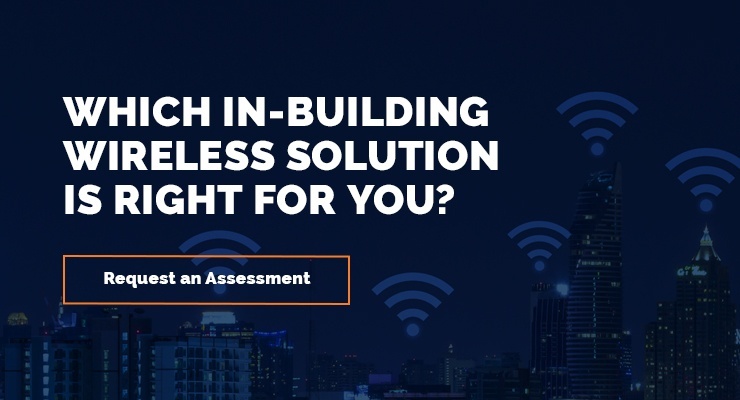Distributed antenna systems (DAS) technology has enhanced cellular in-building and public venue coverage based on end-user demands for seamless connectivity. Wireless providers are starting to leverage distributed antenna systems to implement 5G technology for businesses. 5G is transforming in-building coverage by providing faster speeds, higher capacity, and better support for Internet of Things (IoT) devices.
While some organizations are proactively preparing for the switch, others are contemplating how 5G DAS can benefit their business and, ultimately, if it is an in-building wireless solution worthy of the investment.
To help businesses and building owners understand the opportunities 5G presents, let’s discuss the benefits of implementing an in-building wireless 5G DAS solution and how this promising network upgrade provides organizations a clear path to run more effectively and efficiently than ever before.
3 Advantages of Deploying 5G DAS
5G DAS technology will revolutionize how people live and conduct business, from industrial automation to innovative city applications. 5G provides a substantial performance upgrade over 4G as it is faster, more reliable, more responsive, and capable of supporting more devices.
From faster speeds to lower latency, here are the benefits of installing 5G DAS for your business.
Increased Speed
From a peak speed perspective, 5G is 100 times faster than 4G. Theoretically, 4G can reach data speeds of 100 megabits per second. 5G, on the other hand, has the potential to reach 10 gigabits per second. To put the increased data speed of 5G in perspective, in the time it takes to download one piece of data on 4G, an end-user could download the same data 100 times over on a 5G network.
Since businesses generate and transmit large amounts of data daily, it is essential to have fast data speed. Companies that install a 5G DAS network ensure they have the data speed to maintain workflows and accommodate large data transfers. Higher data-transfer speeds enable first responders to send large amounts of data (such as high-definition video) in real-time for public safety.
Reduced Latency
Latency refers to the amount of time a signal takes to send information from one point to another. High latency results in noticeable lag and can drastically impact call quality and network performance. Current 4G networks have a latency of roughly 50 milliseconds, while new 5G networks have even lower latency at 1-5 milliseconds.
Latency is an essential factor for businesses that leverage IoT devices. The lower latency provided by 5G networks significantly improves the functionality and safety of IoT devices. In healthcare facilities, a surgeon can rely on the low latency of 5G DAS to perform remote surgery as the surgeon’s movements will not be affected by network latency.
Low latency is vital for real-time reactions and decision-making for industrial machines and self-driving cars. Since 5G latency is faster than human visual processing, machine-to-machine communication can occur in real-time and avoid the limitations of human response.
Enhanced Capacity
Capacity refers to the maximum number of devices and the maximum amount of traffic a network can handle at any given time. 5G networks promise to increase device capacity, delivering up to 1,000x more capacity than 4G.
High network capacity is essential for maintaining connection density, which is the ability to successfully deliver a message of a specific size within a particular time regardless of space-constrained locations such as airports and sports venues. 5G is expected to support up to one million devices per .38 square miles. The increased device capacity of 5G enables businesses of all sizes to support the growing number of IoT devices on their network.
Business owners and facility managers can rely on the energy efficiency and adaptability of 5G DAS to help them scale their technology initiatives and deploy 5G networks in a controlled way that accommodates any scenario.
Deploying a Cost-Effective 5G DAS Solution for Your Building
While 4G was an important step forward, the time has come for 5G DAS deployment to keep up with consumption and demand for seamless wireless connectivity.
Businesses and facility managers should partner with an experienced DAS integrator to deploy a 5G-ready distributed antenna system network built with scalability and future flexibility in mind. A cost-effective 5G DAS solution enables businesses to support additional devices at a speedier data rate with reduced latency.





